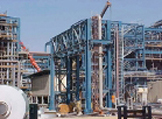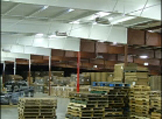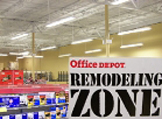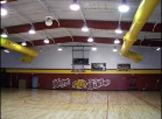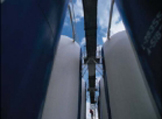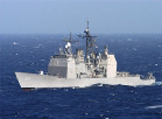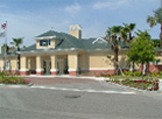Atmospheric Environments

Atmospheric Environments
In this section corrosive environments are classified into the following five atmospheric categories based on contaminants and corrosion rates.
1 - Very Low
Environments in this category are most commonly found inside heated or air conditioned buildings with clean atmospheres, such as most residential and commercial buildings.
2 - Low
Environments in this category include rural areas, most inland cities, suburbs and towns, and other remote regions from the coast or sources of pollution.
Industrial Contaminants - Areas with a high population density but with no major industrial activity.
Sea Contaminants - Areas normally inland 30 miles or more from a shoreline. Proximity to the coast is an important factor for salinity or sea salt spray.
Moisture Contaminants - Corrosion can occur in interior environments due to condensation in unheated or non-air-conditioned buildings, such as in warehouses and sports halls.
3 - Medium
Environments in this category include urban and industrial areas.
Industrial Contaminants - Areas with low pollution levels. These area exist for several miles around major industries, such as smelters and steelworks, and in geothermal areas.
Sea Contaminants - Low level of salinity - Areas normally inland 5 to 30 miles from the shoreline may be in this category, mainly covers coastal areas with low sea salt spray.
Moisture Contaminants - Corrosion can occur in interior environments due to humid production rooms, such as food-processing plants, laundries, breweries and dairies.
Environments, such as those resulting from proximity to airports and sewage treatment plants, may also be included.
4 - High
Environments in this category include the coast and industrial areas.
Industrial Contaminants - Industrial regions with an aggressive atmosphere. These are likely to be found within few miles from a plant.
Sea Contaminants - Moderate level of salinity areas normally 1 to 5 miles inland from the shoreline.
Moisture Contaminants - Damp interior environments corrosion can occur in swimming pool enclosures, dye works, paper manufacturers, foundries, smelters and chemical processing plants may also be included.
5 - Very High
Environments in this category include the Industrial and Marine areas. (5-I: Industrial 5-M: Marine)
Industrial Contaminants - This category may be found in aggressive industrial areas, where the environment is acidic.
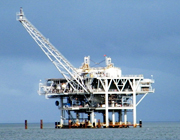
Sea Contaminants - High level of salinity are offshore and on the beachfront in regions of rough seas and surf beaches. The region can extend inland for several hundred yards.
In areas during or with rough seas and surf, the above areas can extend, from yards to many miles inland. As with all categories, the extent depends on winds, wave action and topography.
Moisture Contaminants - Some of the damp and/or contaminated interior environments in category 4 may occasionally extend into this category.
Other Atmospheres
Environments not specifically defined in any of the above categories include:
Atmosphere of buildings exposed to strong UV radiation, for example buildings located at an altitude of over 3.000 feet above sea level.
Particular atmosphere: environment where the severity of the exposure described above is increased by certain factors, such as particularly corrosive agents, sea spray, high hygrometry, significant dust deposits, high temperatures, and abrasion etc.
The environmental factors, temperature, precipitation, wetness time, solar and UV radiant
Call Now - 1.800.354.9165 - Toll Free

